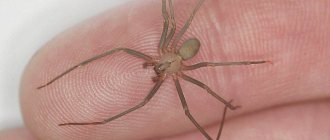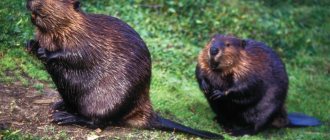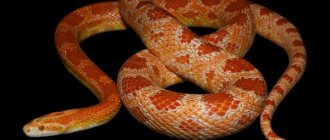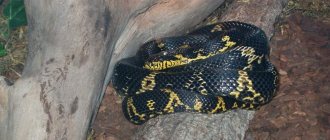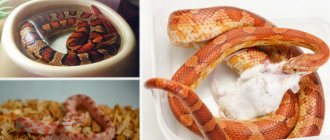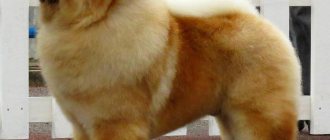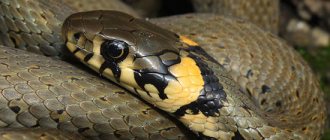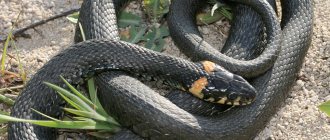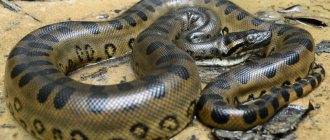The Aesculapian snake (or Aesculapian snake) (Elaphe longissima) is a representative of the family of colubrids of the genus climbing snakes.
The symbolic image of this reptile is known, perhaps, to everyone. The Aesculapian snake is the emblem of medicine. It received its name from the Greek god of healing Asclepius (in Latin pronunciation - Aesculapius). The legend associated with this is interesting.
In ancient Rome, a plague raged, claiming dozens of lives every day. The Romans were in despair. The priests predicted that salvation would come only when the god Aesculapius was brought from the Greek city of Epidaurus. That hour a warship with an embassy was sent to this city. Upon arrival, the strangers were led to the temple of Aesculapius to the statue of the deity. And suddenly, to the amazement of those present, a snake crawled out from under the statue and headed towards the exit. She crawled through the city, followed at a respectful distance by members of the embassy and city residents. Having reached the harbor, the snake rushed into the water, swam to the ship and crawled into the captain's cabin.
A few days later the ship stopped at Antium. Here the snake, which had previously been lying calmly in the cabin, suddenly crawled out of it, rushed into the water and swam to the shore. Having reached the shore, she headed to another famous temple of Aesculapius and climbed a myrtle tree that grew near it. She sat on it for exactly 3 days, after which she returned to the ship.
When the ship arrived in Rome, the snake settled on one of the small islands near the city. The plague stopped immediately. Since then, the god Aesculapius began to be depicted with a rod with a snake wrapped around it.
Each legend is connected with some real events. One might assume that this is based on the fact that snake venom is used in medicine. However, the Aesculapian snake is a non-venomous snake. And its scientific Latin is longesimma, meaning elongated.
Appearance and dimensions
In order to properly respond to this animal when you encounter it—not to panic and not provoke it into any aggressive action—it would be very appropriate to first become familiar with the distinctive features of its appearance.
Did you know? One day, a poisonous snake crawled onto the staff of the famous ancient healer Asclepius (also known as Aesculapius), which he killed. Immediately after this, a then-unnamed Aesculapian snake crawled up to the killed animal with an unknown herb in its mouth and revived its dead friend using the plant. Then Asclepius and his daughter Panacea began to use this herb to treat many ailments, and the snake that brought it received its modern name.
This snake belongs to the family Colubridae and, in general, looks quite strongly reminiscent of its most famous representative - the grass snake.
- Torso. The maximum length is 225 centimeters. Covered with 21–23 rows of scales, which are arranged in a circle and overlap each other. By the number of scutes (essentially larger scales) located on the abdomen, one can distinguish a male from a female: the former have 195–236 scutes, and the latter have 207–248 scutes. The shield located in front of the entrance to the anus has a bifurcation at the tip. The scales on the front part of the body have a smoother texture, while on the back there is already a faint ribbing, more pronounced in males.
- Tail. It is a systematic continuation of the body. Gradually tapers towards the tip. Covered with the same number of scales and scutes as the body, which gradually decrease in size until the very end of the tail.
- Head. Quite short in size, narrow, slightly widened at the junction with the body. Covered with scutes - on the crown located in two rows, the premaxillary (the widest of all), the preorbital, two postorbitals, the trapezoidal zygomatic, and eight to nine labials.
- Eyes. They are small in size, absolutely round in shape, and have three pairs of eyelids. Placed strictly on the same line in relation to each other. They are adjacent to the first row of parietal scutes above and to the labial scutes below. The color of the eyes often matches the color of the entire body.
- Color. Most often olive, brownish, yellow-cream-grayish or brownish. In some individuals, the edges of the scales, specifically colored white, form a special pattern with a mesh structure on the back. The belly is often painted white with a pearlescent tint (more typical for males) or yellowish with various dark spots. Whitish spots are located in the direction from the back of the head to the mouth. Very often a barely noticeable dark stripe runs from the edge of the mouth to the eye.
Did you know? In the species in question, albinos can sometimes be found, whose appearance is characterized by the presence of red eyes and a straw-colored body, without any distinctive features inherent in Aesculapian snakes.
Behavior
The Aesculapian snake loves warmth very much. For its place of residence, it chooses dense bushes, low-growing vegetation or crevices between stones. She devotes a lot of her time to sunbathing.
A disturbed reptile freezes in one place, and if danger approaches, it quickly dissolves among nearby bushes or hides in the crown of trees. The snake is very active and aggressive. At sunset she goes out hunting. She looks for her lunch on the ground, but often climbs trees and smooth walls.
Possessing such abilities, she can catch a bat, a bird, or feast on bird eggs for lunch. When hunting on the ground, the reptile catches rats, mice, voles or lizards. She strangles her victim with the rings of her body and then swallows her.
The Aesculapian snake is an excellent swimmer. It is active for five months. At the end of September, snakes gather in shelters protected from the cold and spend the entire winter in hibernation. In early May they crawl to the surface.
Range, habitat
The endemic habitat of these snakes is limited on the one hand by the northeastern Italian provinces, and on the other by the lands of the Caucasus (Azerbaijan and Georgia). It can be found especially often in the territories of Southern Moldova, in the foothills of Adygea, Krasnodar Territory and the Southwestern part of Ukraine (primarily in the Carpathians and Carpathian region).
Representatives of the described species, living in the territory of Northern Iran and Talysh, according to modern nomenclature are usually classified as a new species - the Persian snake, which differs from the familiar Aesculapian snake only in slightly smaller body sizes and slight differences in the structure of the head. The most common habitats of the Aesculapian snake are foothills covered with forests (ranging from beech to coniferous).
Individual representatives of the species can be found in the mountains, in forested clearings, at an altitude of up to two thousand meters above sea level. Isolated cases of encounters with these cold-blooded animals have been recorded in lowland areas covered with tea plantations, hazelnut plantings, clearings located in lowland forests, in rocky ravines and wet meadows.
Find out where to keep and what to feed the corn snake.
Genus climbing snakes
Now representatives of this genus are very widespread: in North and Central America, Southern and Central Europe, and Asia.
Let's look at some species from this genus.
Island snake
The island snake is found only in Japan and the island of Kunashir. Representatives of the species reach a body length of up to 1.3 meters.
This species lives on the seashore, among stones or surf debris, and can also be found in bamboo thickets or the litter of coniferous forests. This species swims well in both fresh and sea water.
It hunts birds and small mammals; due to hunger, it can also attack Far Eastern frogs. The victim is strangled by wrapping rings around her body and squeezing her, like a boa constrictor.
The most serious enemy of the island snake is the European mink, which was artificially introduced into Kunashir in 1985. Also, active construction leads to a reduction in the species’ natural habitats.
Red-backed snake
A species of snakes up to 80 centimeters long, lives in the south of the Far East, the northern border of the range reaches approximately Khabarovsk and in the northwest to the Burei and Zeya rivers.
It is found along overgrown banks of rivers and standing reservoirs. Swims and dives well, which resembles a snake. This species is absolutely harmless to humans.
The species is ovoviviparous; the female gives birth to 8 to 20 cubs up to 20 centimeters long at the end of September.
Patterned runner
Patterned snake - this species lives in the vast expanses of Asia. It can be found in Mongolia, Korea, northern China, Kyrgyzstan, Tajikistan, Kazakhstan and Southern Siberia, Transcaucasia and further to the northern part of Iran.
The patterned runner reaches a length of one and a half meters. The peculiarity of this species is its very variable coloration. There are monochromatic individuals (melanists), which were previously distinguished into separate subspecies. But as a result of research, it was proven that such color variants are only variants of population variability within the boundaries of one species.
It lives in a wide variety of conditions, it can be found in deserts, steppes, coniferous or mixed forests, juniper woodlands, orchards and vineyards, river valleys, swampy areas, rice fields, and so on. Swims and dives well, climbs tree branches.
Lifestyle, nutrition
The Aesculapian snake leads an active daily lifestyle. During the day, he moves around the territory adjacent to the location of his shelter, in search of food, protects it from the encroachments of other snakes and his natural enemies, and explores the area for the presence of new potential shelters. These snakes are quite good at climbing various trees, using for these purposes the unevenness of the bark, to which they cling with the help of their scales and body bends.
They can hunt equally well both on the ground and in trees. At night, the Aesculapian snake prefers to be safe - in one of the numerous shelters known to it, located in the territory it occupies. Usually their role is played by various crevices in the mountains, small caves, voids between stones, accumulations of wood and brushwood, tree hollows, as well as holes of small mammals, which she either drives away forever or eats.
This species is not inclined to actively independently build shelters and, if it is impossible to find a suitable shelter for itself, prefers to change its habitat. The main source of food for such animals is a variety of small rodents - endemic to the foothills, forests and meadows, shrews, chicks and eggs of various birds.
Important! If you come across a snake similar in appearance to a snake at night, it is best to stay away from it. With a high degree of probability, you have come across a representative of the family of so-called false colubrids, which, despite their body being quite similar to a snake, pose a fairly significant danger to human life and health.
Sometimes, with a successful combination of circumstances and sufficient endurance, during the hunt they manage to get some large bird as prey. During the hunting process, the snake actively moves around its territory, making virtually no sounds. After he finds and catches the prey in his mouth, he wraps rings around it and begins to strangle it. Then the victim dies, and the snake gradually swallows it. The process of digesting caught prey can take a snake up to four days.
Spreading
The Aesculapian snake is one of the largest snakes on the European continent. Its original homeland is Southern and Central Europe, from where it came to South-West Asia.
The reptile lives in open forests with developed undergrowth and large boulders in open areas. Occasionally it can be seen near a warm river, on old ruins or in abandoned quarries.
The Aesculapian snake is a non-venomous snake and does not pose any danger to humans. Very often she becomes a victim of human illiteracy and cruelty. Many countries have taken these harmless reptiles under protection. In Austria and Germany, special parks have been created for snakes, where they are protected.
Is the poison dangerous for humans?
Like most other representatives of the Colubridae family, the described species of snakes does not have poisonous glands, and accordingly, it will not be able to seriously poison a person. However, its bites are quite painful and are very often accompanied by the formation of massive swelling in the areas of the body adjacent to them and local hemorrhages. Under normal conditions, the snake will not show excessive aggression towards people - it avoids people in every possible way and hides from them due to the significant difference in body size.
This type of snake will only attack a person if the person is being too negative and intrusive towards him. There is also a small chance that the bite victim will have an allergic reaction in response to the biologically active substances and enzymes contained in the snake's saliva.
The most common scenario is usually the so-called Quincke's edema, also known as angioedema. Its danger lies in the fact that it often causes swelling of the mucous membrane of the larynx and vocal cords, which is why a person cannot breathe and dies as a result of asphyxia. The very first symptoms of such an allergic reaction are a sharp and pronounced swelling of the lips, eyelids, nose, and often even the entire face and neck.
Also check out such non-venomous snakes as the tiger python, milk snake and reticulated python.
Description
The body length reaches 2 m. The uniform color of the back and sides varies from grayish-brown to dark olive. The abdomen is light yellow. Yellow spots are visible on the sides of the head.
The narrow oval head is slightly limited from the body. In its upper part there are eyes with round pupils. The slender, muscular body is covered with smooth and shiny scales. Each scale has a mesh pattern. The ventral side is protected by ribbed scutes.
The lifespan of the Aesculapian snake in natural conditions reaches 11-13 years.
Source: zooclub.org.ua
Enemies in the wild
Due to the fact that the snake is a fairly peaceful and calm animal, it has few enemies in its endemic areas. In addition, in the process of evolution and migration of the snakes in question, the snakes were able to find living conditions where the concentration of animals potentially dangerous to their lives would be minimal, but at the same time a sufficient number of creatures suitable for their consumption would remain.
The most serious enemies for the Aesculapian snake are various predatory mammals - foxes, wolves, bears, raccoons, nutria, etc., as well as large birds of prey - eagles, bald eagles, golden eagles, falcons, etc. There are several documented cases of attacks these snakes are large owls, but since snakes are active in the daytime, and owls are active at night, these are most likely phenomena that are out of the normal state of affairs.
Important! The creature that causes the most significant harm to this type of snake is man. This is primarily due to the technogenic factor - deforestation and development of lands that were previously home to snakes.

